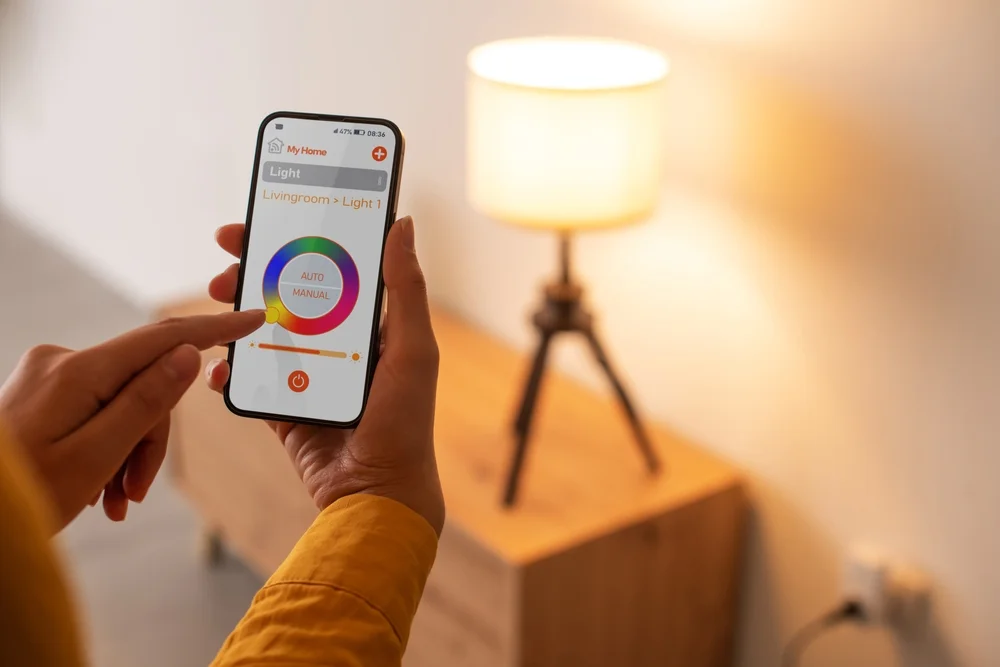A Comprehensive Guide to Smart Home Technology

Smart home technology is transforming the way we live. Imagine being able to control your lights, heating, or even your fridge with just a tap on your phone. Smart homes are not only convenient but can also help you save energy, make your home safer, and generally improve your day-to-day life. If you’ve ever wondered how smart home technology works and how it can make your life easier, this guide will help you understand everything you need to know!
What is a Smart Home?
A smart home is a house that uses devices connected to the internet to control things like lighting, heating, appliances, and security systems. These devices can communicate with each other and can often be controlled remotely using a smartphone or a voice command.
For example, imagine you’ve left the house and you forgot to turn off the lights. With smart home technology, you can simply open an app on your phone and turn them off, even if you’re miles away.
How Does Smart Home Technology Work?
Smart home devices rely on something called the Internet of Things (IoT). The IoT is like a network that connects different devices to the internet, allowing them to talk to each other. For example, your smart thermostat can connect to your phone or tablet, which means you can control the temperature of your home, even when you’re not there.
Another cool thing is that these devices often have artificial intelligence (AI), which means they can learn your habits and make suggestions or adjustments automatically. You can learn more about how AI is used in smart home devices and modern marketing here.
Examples of Smart Home Devices
Here are some popular smart home devices that people love to use:
- Smart Lights: You can control your lights with your phone or by voice. You can even change the colour of the lights and set them to turn on or off at certain times.
- Smart Thermostat: These devices allow you to control the temperature of your home from anywhere. They can learn your routine and adjust the temperature automatically.
- Smart Locks: Instead of using a traditional key, you can lock and unlock your doors using an app. Some smart locks even allow you to create special access codes for guests or family members.
- Smart Security Cameras: These cameras let you keep an eye on your home from anywhere. You can get notifications if there’s movement, and some cameras even let you speak through them to anyone at your door.
How Smart Home Technology Can Benefit You
Smart home technology isn’t just about making life easier. There are many real benefits that come with using these devices:
- Energy Saving: Smart home devices can help you use less energy. For example, a smart thermostat can adjust the temperature when you’re not home, saving energy and reducing your bills.
- Safety: With smart security cameras and smart locks, you can keep your home safe, even when you’re far away. You’ll always know what’s happening in and around your house.
- Convenience: Imagine controlling everything with just your voice or a smartphone app. You can even automate tasks like turning off lights when you go to bed or adjusting the thermostat when you leave the house.
How to Set Up a Smart Home
Setting up a smart home is easier than you might think! Here’s a step-by-step guide:
- Choose a Hub: A hub is like the brain of your smart home. It connects all your smart devices so they can work together. Popular hubs include Amazon Alexa, Google Home, and Apple HomeKit.
- Pick Your Devices: Decide which smart devices you want. It could be smart lights, a smart thermostat, or smart security cameras. You don’t have to get everything at once; you can start small and add more over time.
- Set Up Your Devices: Once you have your devices, you’ll need to set them up. Most smart devices come with an app that guides you through the process. Make sure your devices are connected to your Wi-Fi network.
- Create Automations: One of the coolest things about smart homes is automating tasks. For example, you can set your lights to turn off automatically when you leave the house or have your thermostat adjust when you’re asleep.
Smart Home Security: Keeping Your Data Safe
While smart home technology can make life easier, it’s important to keep your devices secure. Since your smart devices are connected to the internet, they can be vulnerable to hackers if not protected properly.
Here are some tips to keep your smart home secure:
- Use Strong Passwords: Make sure all your devices are protected with strong, unique passwords. This will make it harder for anyone to gain access.
- Update Your Devices: Smart devices often get software updates to fix security issues. Make sure you update them regularly.
- Secure Your Wi-Fi: Your Wi-Fi network is the gateway to all your smart devices, so make sure it’s secure. Use a strong password and consider setting up a separate network for your smart devices.
The Future of Smart Homes
The future of smart homes is bright! With technology constantly evolving, there are new devices and features being developed that will make our homes even smarter. In the future, we might see homes that are almost fully automated, with AI predicting what we need before we even ask.
For example, imagine your fridge telling you when you’re out of milk and adding it to your online shopping list automatically. Or, imagine your home’s AI system turning on the heater when it notices a cold front coming.
If you’re curious about how smart technology is influencing other fields, this article discusses the future of social media advertising.
Integrating Smart Home Technology into Your Daily Life
Smart home technology can make a big difference in your everyday routine. Here’s how you might use it:
- Morning Routine: Your smart alarm clock wakes you up, your smart coffee machine starts brewing, and your smart thermostat adjusts the temperature to make sure the house is comfortable.
- Leaving for Work: As you leave the house, your smart lights turn off, the smart thermostat reduces the temperature to save energy, and your smart security system activates.
- Coming Home: Your smart lock recognises your phone as you approach and unlocks the door for you. Your lights turn on automatically, and your favourite music starts playing.
- Bedtime: Your smart lights dim slowly as you get ready for bed, and your smart security system ensures all doors are locked.
Popular Smart Home Platforms
There are several smart home platforms that help connect all your devices. Here’s a quick overview:
- Amazon Alexa: One of the most popular platforms. It works with many smart devices and allows you to control them with your voice.
- Google Home: Google’s smart home platform is also widely used. It can control smart devices and is great for answering questions and controlling Google services.
- Apple HomeKit: If you’re an Apple user, HomeKit is a great option. It allows you to control your smart devices through Siri and integrates well with other Apple products.
Smart Home Technology and Marketing
Smart home technology is also playing a big role in marketing. Companies are using devices like smart speakers to deliver personalised adverts or content. For example, if you ask your smart speaker for recipe ideas, it might suggest a brand of ingredients. You can learn more about how marketing is changing thanks to technology here.
The Impact of Smart Homes on the Environment
One of the best things about smart homes is their potential to help the environment. By using devices like smart thermostats and smart plugs, we can reduce the amount of energy we use. This is great for the planet because it means fewer harmful emissions are produced.
For example, your smart thermostat might turn off the heating when no one’s home, saving energy. Small changes like this can make a big difference.
Conclusion
Smart home technology is changing the way we live, making our homes more comfortable, energy-efficient, and secure. From smart lights and thermostats to security systems and voice assistants, there are so many devices that can make life easier. And the best part? You don’t need to be a tech expert to set up a smart home.
With just a few devices and some basic knowledge, anyone can start enjoying the benefits of a smart home. If you’re interested in staying ahead of the curve and learning about future technologies, check out some of these useful resources, like how SEO is evolving in 2024 or the benefits of targeted email marketing.
By understanding and using smart home technology, you can create a more efficient, safer, and eco-friendly home. Happy smart home building.
Contact Us
You can contact us on Whatsapp:
or fill up the contact form
